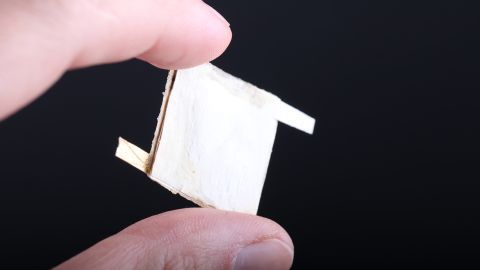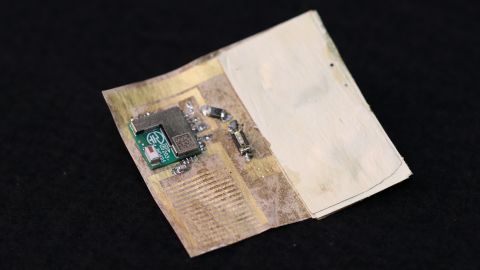Sign up for CNN’s Wonder Theory science newsletter. Explore the universe with news on fascinating discoveries, scientific advancements and more.
Foraging for fungi may not only mean mushrooms are on the menu. New research has shown that mushroom skins could provide a biodegradable alternative to some plastics used in batteries and computer chips, making them easier to recycle.
Researchers from the Johannes Kepler University in Austria were working on flexible and stretchable electronics, with a focus on sustainable materials to replace non-degradable materials, when they made their discovery, published in the journal Science Advances Friday.

“There was a fair share of serendipity involved,” Martin Kaltenbrunner, head of the university’s Division of Soft Matter Physics and co-author of the paper, told CNN.
At the time, a member of the team had been looking at using fungus-derived materials for use in other areas. This work led to the latest study, which shows how Ganoderma lucidum mushroom skin could work as a substitute for the substrate used in electrical circuits.
A substrate is the base of a circuit that insulates and cools the conductive metals sitting on top of it. Typically, they are made of non-degradable plastics, which are discarded after use.
The team, led by Doris Danninger and Roland Pruckner from the university’s Institute for Experimental Physics, discovered that the mushroom – which typically grows on decaying hardwood trees in Europe and East Asia – forms a compact protective skin made of mycelium, a root-like network, to protect its growth medium (the wood).

“They do so in order to protect themselves from ingress of other fungi or bacteria,” Kaltenbrunner said, explaining that the team were able to harvest this insulating protection by peeling away the skin and drying it out.
According to the research paper, the skin is slightly less insulating than plastic, but it still worked safely and successfully in the electrical circuits, with a thickness akin to paper and the ability to withstand temperatures exceeding 200° Celsius (392° Fahrenheit), making it a good substrate.
The skin has many properties that set it apart from other biodegradable materials, Kaltenbrunner said, “but most importantly, it can simply be grown from waste wood and does not need energy or cost intensive processing.”
“Our mycelium is kind of in the sweet spot” because it can last a long time if kept dry, but in just a standard household compost, it would degrade entirely within two weeks or less, he added.
While the team’s work is currently experimental and a long way from being put into mass production, they believe the biodegradable skins could be a sustainable alternative material for use in electronics that don’t require long-lasting electrical circuits, such as wearable health monitors and near-field communication (NFC) tags for electronic devices.
But they also envisage wider use if they are able to control the mycelium’s growth so that it is uniform and reproduceable.
There are large amounts of waste wood, like wood chippings from industrial sawing, Kaltenbrunner told CNN, which is a lot of food for mushrooms.
"chips" - Google News
November 15, 2022 at 08:27PM
https://ift.tt/cbhPRWz
Scientists have used mushrooms to make biodegradable computer chips - CNN
"chips" - Google News
https://ift.tt/lvuZhdL
https://ift.tt/JafziBc
Bagikan Berita Ini















0 Response to "Scientists have used mushrooms to make biodegradable computer chips - CNN"
Post a Comment